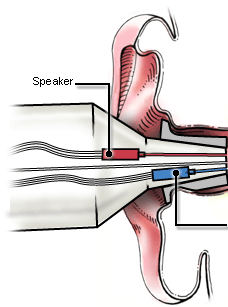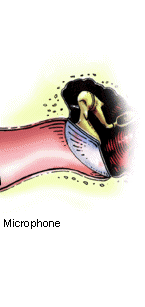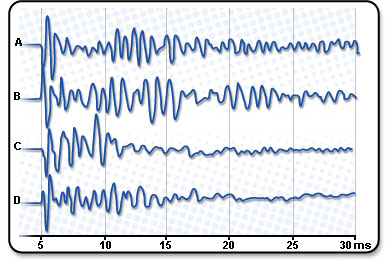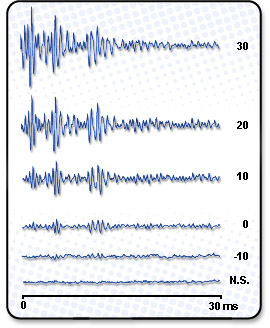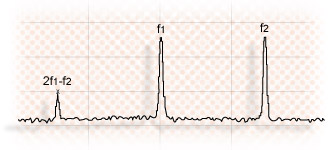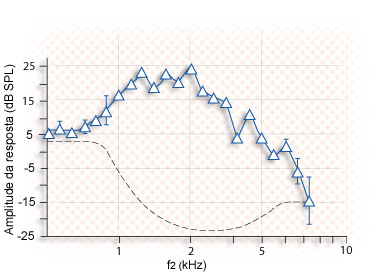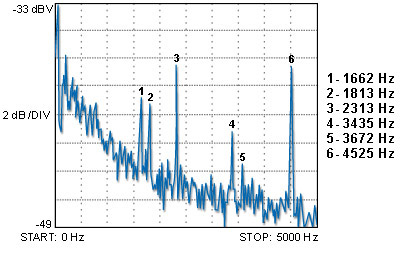| |
|
| Overview / Coupling / Membrane / Synapses / Active mechanism / Oto-acoustic emissions | |
| Drawings: S. Blatrix; OAE recordings: JL Puel, P. Bonfils, JP Piron |
| Oto-acoustic emissions | |||
| Discovered back in 1978 (see ref. f12), oto-acoustic emissions (OAEs) were not fully explained until a few years later, after the OHC active mechanism had been understood. At least in the mammalian cochlea, OAEs reflect OHC electromotility. OHC contractions/elongations themselves vibrate cochlear fluids and the middle ear conducting mechanism transfers this vibration back to the air of the external auditory canal: there, the emissions can be registered by a microphone. | |||
|
Schematic drawing of a probe for
recording evoked OAEs. |
||
